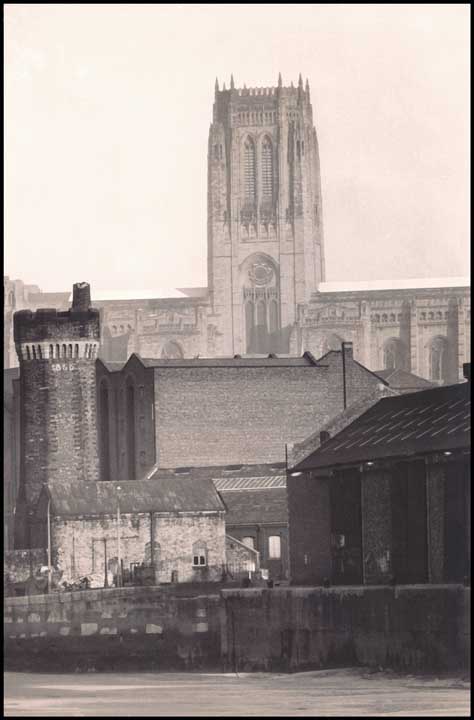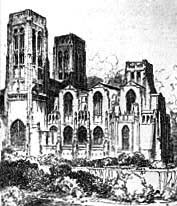The
Black
&
White
Picture
Place
Photographs of Liverpool

Liverpool Anglican Cathedral from Toxteth Dock in 1981 and, below, in April 2012.

Our next photograph shows the
Cathedral from just a little further up the road 25 years later...
|
With the exception of one of Jesse Hartley's Hydraulic Towers on the left of the main picture, the buildings and dock basin in the foreground have disappeared under a car park since the photograph was taken and the entire area is currently subject to a number of competing redevelopment plans. Compare the image with one made thirty years earlier by the great Liverpool photographer, Edward Chambré-Hardman here |
|
"One of the neatest, best-built towns I have seen in England." John Wesley 1775 |
|
"The whole complexion nautical, and so infinitely below our expectations, that naught but the thought of the few hours we had to pass here made it tolerable." Judge Samuel Curwen 1780 |
|
"This town is full of Germans, Jews, Welsh, Irish and Dutch; it has its fine sides and the docks are wondrous." Augustus John 1900 |
Gallery Introduction | Liverpool Gallery | B&W
Picture Place | Site Front
Door | Contact us | Next Picture
Gallery Introduction | Liverpool Gallery | B&W
Picture Place | Site Front
Door | Contact us | Next Picture
 This
gigantic
building,
the
swan-song
of
Gothic
architecture
in
Europe,
and
one
of
the
greatest
cathedrals
in
the
world,
was
designed
by
the
23-year
old Giles
Gilbert
Scott
after
winning
a
competition
which
attracted
over
100
entries
from
such
eminent
architects
as
Professor
Charles
Reilley
and
that master of Art Deco, Charles
Rennie
Mackintosh- whose
unplaced
entry
greatly
influenced
the
young
man's
final
design.
This
gigantic
building,
the
swan-song
of
Gothic
architecture
in
Europe,
and
one
of
the
greatest
cathedrals
in
the
world,
was
designed
by
the
23-year
old Giles
Gilbert
Scott
after
winning
a
competition
which
attracted
over
100
entries
from
such
eminent
architects
as
Professor
Charles
Reilley
and
that master of Art Deco, Charles
Rennie
Mackintosh- whose
unplaced
entry
greatly
influenced
the
young
man's
final
design. A few hundred yards down the road is yet another cathedral, the Roman Catholic one, designed in a much more modern style- after the abandonment of an earlier scheme of which only the crypt was completed- by Frederic Gibberd in 1967, and (because of the large number of Irish craftsmen employed in its construction) often referred to locally as Paddy's Wigwam. A tour of both of these stunning buildings is highly recommended to all visitors to the city.
A few hundred yards down the road is yet another cathedral, the Roman Catholic one, designed in a much more modern style- after the abandonment of an earlier scheme of which only the crypt was completed- by Frederic Gibberd in 1967, and (because of the large number of Irish craftsmen employed in its construction) often referred to locally as Paddy's Wigwam. A tour of both of these stunning buildings is highly recommended to all visitors to the city.